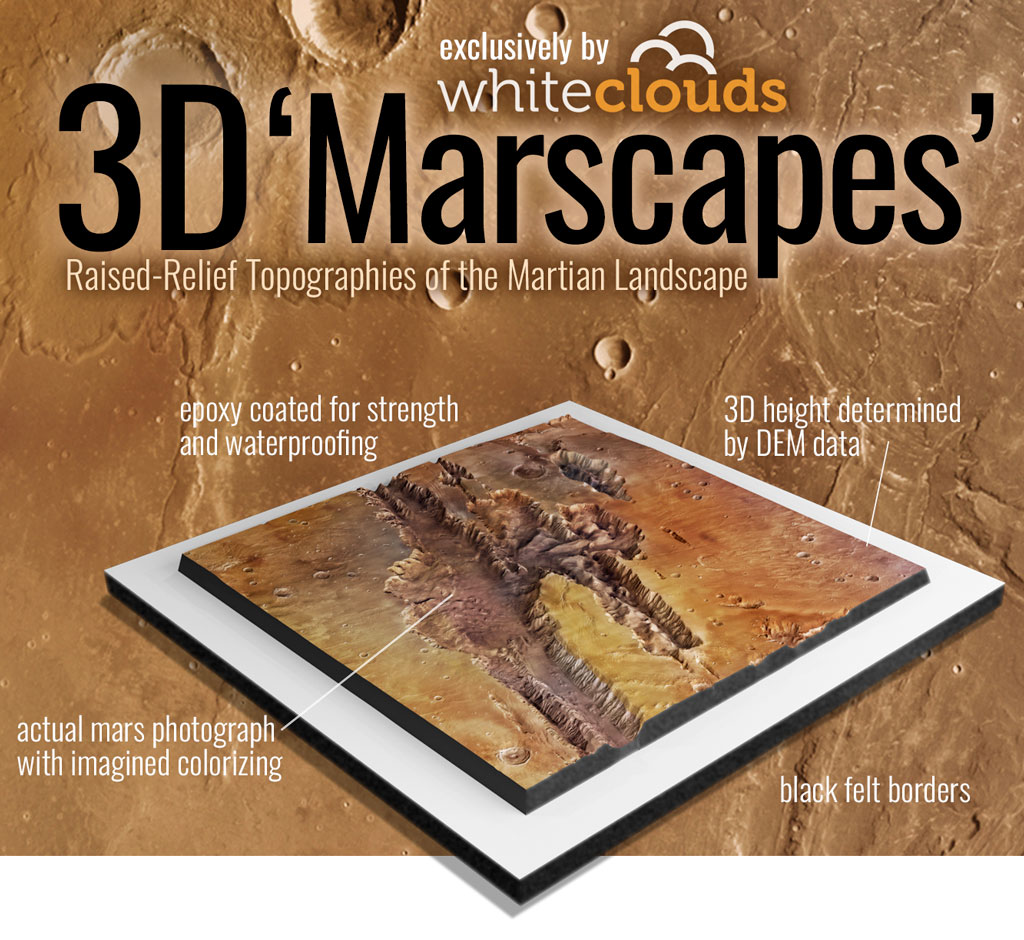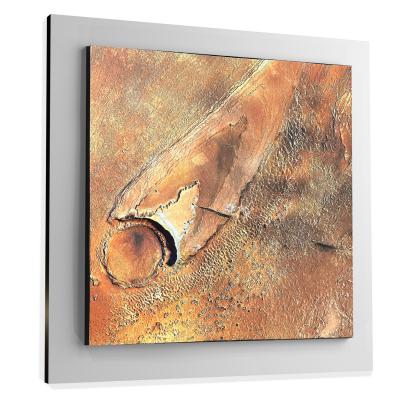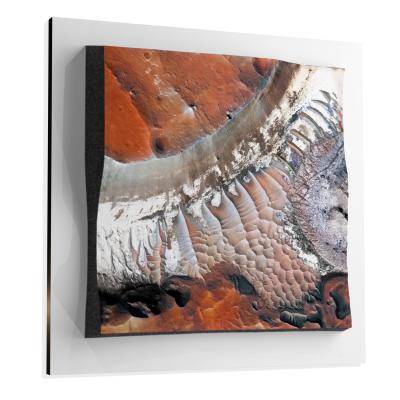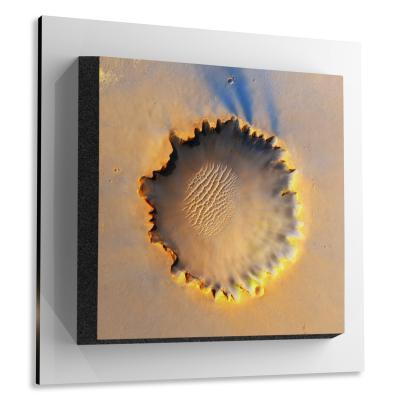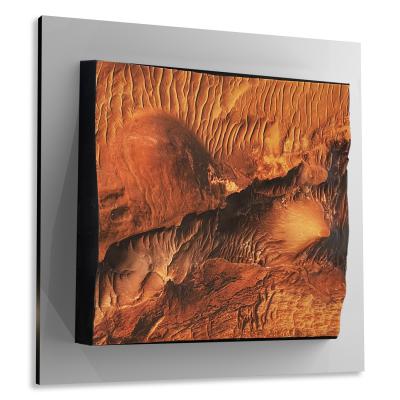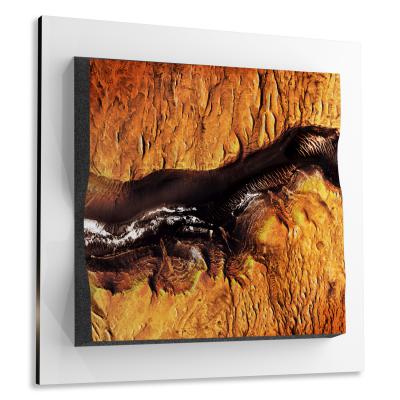Athabasca Valles
Athabasca Valles
We Build Custom 8K Mars Canvas Prints of Athabasca Valles
Did you know we make
custom
8K Mars Canvas Prints

and
3D Marscapes

Athabasca Valles
Athabasca Valles is an intriguing and highly complex channel system on the planet Mars, known for its geomorphological features that hint at a history of catastrophic outflow events. Located within the Elysium Planitia region, Athabasca Valles has become a subject of intense study due to the implications its features have on our understanding of Mars’ geological and potential hydrological past.
 Athabasca Valles
Athabasca Valles
Geographical Location
Located in the heart of the Elysium Planitia region on Mars, Athabasca Valles is a strikingly intricate channel system that occupies a specific geographical zone between 4.6°N and 6.5°N latitude and 155.3°E and 156.3°E longitude. The spatial orientation of Athabasca Valles situates it in close proximity to the intriguing Cerberus Fossae fissures, the cracks from which this channel system is widely theorized to have originated. Stretching over an estimated 100 kilometers, the channel’s length showcases a remarkable degree of geological evolution, while its width fluctuates between 5 and 10 kilometers at various points. Its unique geographical setting makes Athabasca Valles an invaluable component for understanding the drainage mechanisms associated with Cerberus Fossae and potentially other nearby formations. As a key reference point, the geographical locale also offers an enriching framework for interpreting the larger geological and hydrological paradigms evident within the broader landscape of the Elysium Planitia.
Advertisement
Sample Marscapes
Geological Composition
Athabasca Valles offers a tantalizing geological story that captivates scientists and researchers. The channel system is primarily constructed of basaltic lavas, a characteristic that strongly implies a history of volcanic activity as a primary agent in its formation. Complementing the basaltic backdrop are sedimentary deposits dispersed throughout the channel system. These deposits exhibit a blend of mineralogical compositions including sulfates, clays, and an assortment of salts, all of which suggest the possible influence of multiple alteration mechanisms, whether by water, wind, or thermal activity. Advanced remote sensing techniques have not only corroborated these findings but also expanded our knowledge about the geological intricacies that make Athabasca Valles an optimum target for investigations aimed at dissecting the Martian subsurface and uncovering how it has interacted historically with various liquid agents.
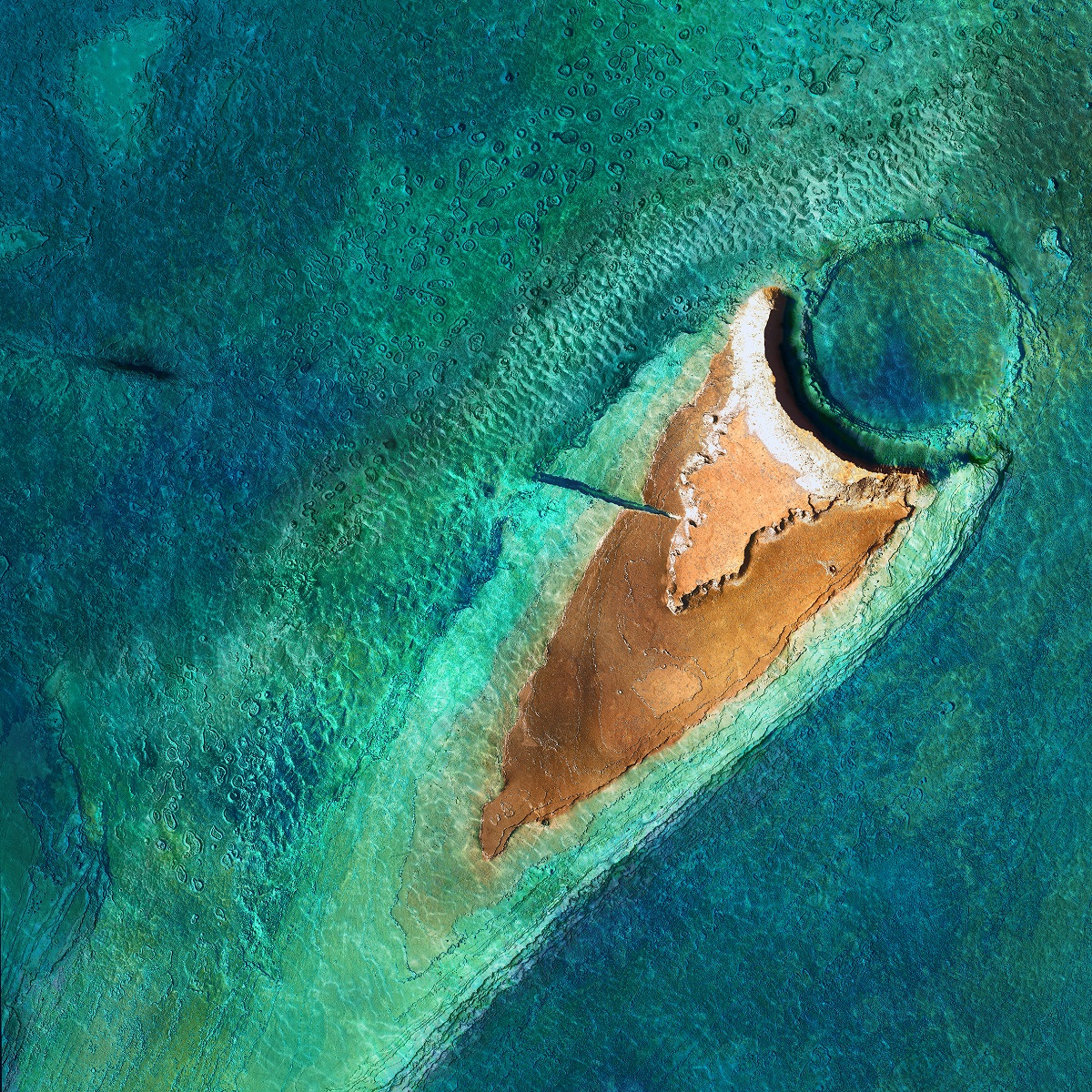 Athabasca Valles Digitized with Water
Athabasca Valles Digitized with WaterSignificant Discoveries
Catastrophic Outflows
One of the most paradigm-shifting findings about Athabasca Valles is the abundance of geomorphological evidence suggesting a turbulent history marred by catastrophic flooding events. The channel system sports a collection of streamlined islands and tear-drop-shaped landforms that are telltale signs of rapid, high-volume outflows. Massive scour marks further embellish the landscape, adding yet another layer of evidence for sudden releases of liquids or semi-liquids, possibly water, although more recent studies suggest lava flows as a plausible explanation.
Aged Surface
Modern radiometric dating techniques have shed light on the age of the surface features within Athabasca Valles. With an estimated age bracket of 2 to 10 million years, the region appears to be relatively youthful in the Martian timescale. This young age poses a significant challenge to some existing theories about when geological processes may have ceased on Mars.
Complex Terrains
Beyond its flooding history and youthful features, Athabasca Valles is home to a diversified range of terrains that include volcanic plains, enigmatic fractured crusts, and features indicative of erosion. The coexistence of these terrains underscores the likelihood that this region has been sculpted through a combination of both fluvial and volcanic activities, enriching our understanding of Martian geomorphology.
Scientific Missions
Multiple scientific missions have been pivotal in unraveling the complexities of Athabasca Valles. NASA’s Mars Reconnaissance Orbiter (MRO) has been at the forefront, especially through its state-of-the-art instruments like the High-Resolution Imaging Science Experiment (HiRISE) and the Compact Reconnaissance Imaging Spectrometer for Mars (CRISM). These instruments have delivered exquisite high-resolution images and rich mineralogical data that have been foundational for our scientific interpretation of the region. Similarly, the European Space Agency’s Mars Express has made invaluable contributions through its own suite of instruments, supplying additional layers of information that have been synthesized into our existing body of knowledge.
Geomorphological Features
When it comes to geomorphological attributes, Athabasca Valles stands as a microcosm of Martian dynamism. The system is heavily punctuated by streamlined islands, which serve as a clear testament to the role of fluid dynamics in shaping its landscape. Additionally, the presence of scour marks, eerily similar to those found in terrestrial outflow channels, provide compelling evidence that material has been hastily eroded and relocated during flood events. The channel system is also embroidered with an array of fissures, cracks, and sedimentary deposits. Each of these features lends a separate but integrated narrative to the overall geomorphology, painting a picture of a Martian history that has been both cataclysmic and multifaceted.
Athabasca Valles serves as a remarkable case study for understanding the complex geological history of Mars. Its unique geographical location and features provide strong evidence for catastrophic outflow events, possibly involving both water and lava. The rich geological composition, combined with the data collected from various scientific missions, makes Athabasca Valles a cornerstone in Martian geological and hydrological research. As more missions target the Martian surface for exploration, Athabasca Valles will undoubtedly continue to be a focal point in the quest to understand the Red Planet’s past and, possibly, its ability to harbor life.
Check out our 3D Mars Learning Center for more information on Mars and Athabasca Valles. You can also learn more at: NASA Mars Exploration.
More About Mars
Contact us today to learn more about our 3D services and how we can help you achieve your goals.
